Many travelers head to Tokyo, Japan, for the colors: the bright yellow and white lights of the delightfully hectic Shibuya crossing, the rich reds of lanterns and tapestries at Tokyo’s temples, and the bright pinks and purples of flowers on the grounds of the city’s many historical sites. And if that culture of color appeals to you, you’ll definitely want to schedule your trip to coincide with one of the many festivals in Tokyo below.

Many of Tokyo’s festivals have been held for centuries and are an excellent way for visitors to experience traditions tied to Japan’s Shinto religion, which places a great deal of emphasis on the natural world and its connection to human beings. The festivals also celebrate art, music, and the ways in which Japan’s ancient culture connects to modern day.
These are the best festivals in Tokyo to attend every month — though it’s not a complete list. However, you can find an ongoing list at JapanTravel.
Pro tip: many festivals in Tokyo include traditional kabuki performances, but don’t worry if you don’t speak Japanese. They’re designed to be easy to understand and are mostly about the dress and dance, so it doesn’t really matter if you don’t understand the dialogue.
January: Coming of Age Day
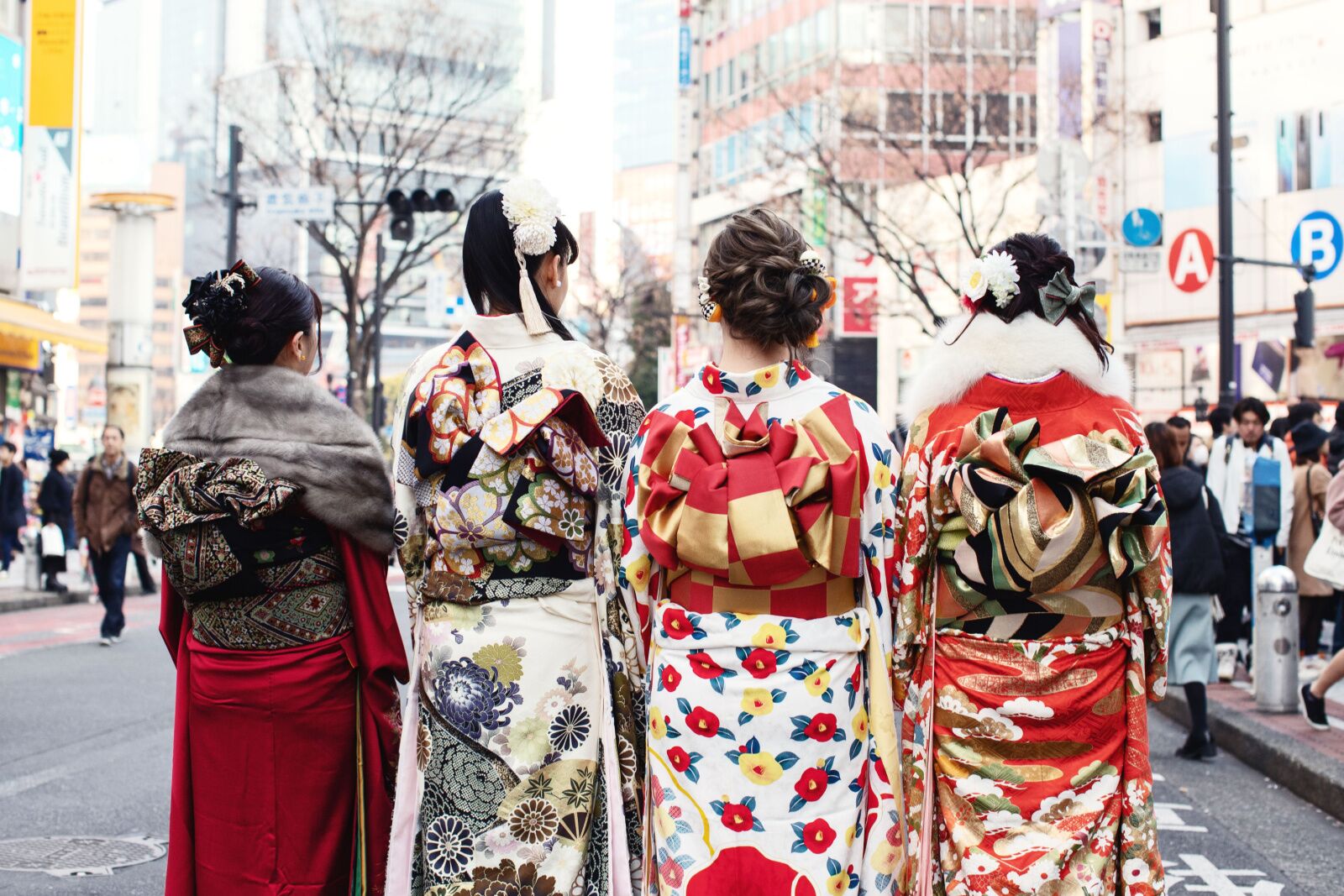
Photo: Morumotto/Shutterstock
Coming of Age Day is a national holiday in Japan that celebrates young people who have turned 20 in the last year (20 marks the age of adulthood in Japan). In Tokyo, the ceremonies are held at the Shinjuku and Shibuya Ward offices and are some of the biggest ceremonies in the city. 20-year-olds will dress in traditional kimonos or suits, take commemorative photos, and attend speeches by local officials.
If you’re near either of the festival locations, it’s totally fine for visitors to walk over and watch the ceremonies, which are sometimes followed by live music. And if you’re anywhere in Tokyo around that time, you’ll probably notice photoshoots and large gatherings of young adults. This would be a good time to learn the Japanese word for “Congratulations” (it’s “omedetō gozaimasu”).
- Usually held: Second Monday of January
- Location: Ceremonies are at civil offices, but celebrations are throughout the city
February: Setsubun
Setsubun is an annual festival in Tokyo celebrating the beginning of spring, and is more commonly known as the “bean-throwing festival.” During the festival, people perform a ceremony called mamemaki, in which they throw roasted soybeans while shouting “Oni wa soto! Fuku wa uchi!” (meaning “demons out, good luck in”). Traditionally, it was believed to drive away evil spirits and bring good luck for the new year.
Fortunately, this is one of the easiest festivals in Tokyo for visitors to participate in. At sites like Sensoji Temple, the Zojoji Temple, the Meiji Shrine, the Ikegami Honmonji Temple, or the Kanda Myojin Shrine, visitors can buy small bags of soybeans (called “fuku mame”) and throw them with the crowd to drive away evil spirits and bring good luck. At some of the bigger celebrations, you’ll even see children dressed up in spirit masks and costumes.
-
- Usual held: February 3 or 4
- Location: Across the city, but Zojoji Temple has an especially large celebration
March and April: Cherry Blossom Festivals
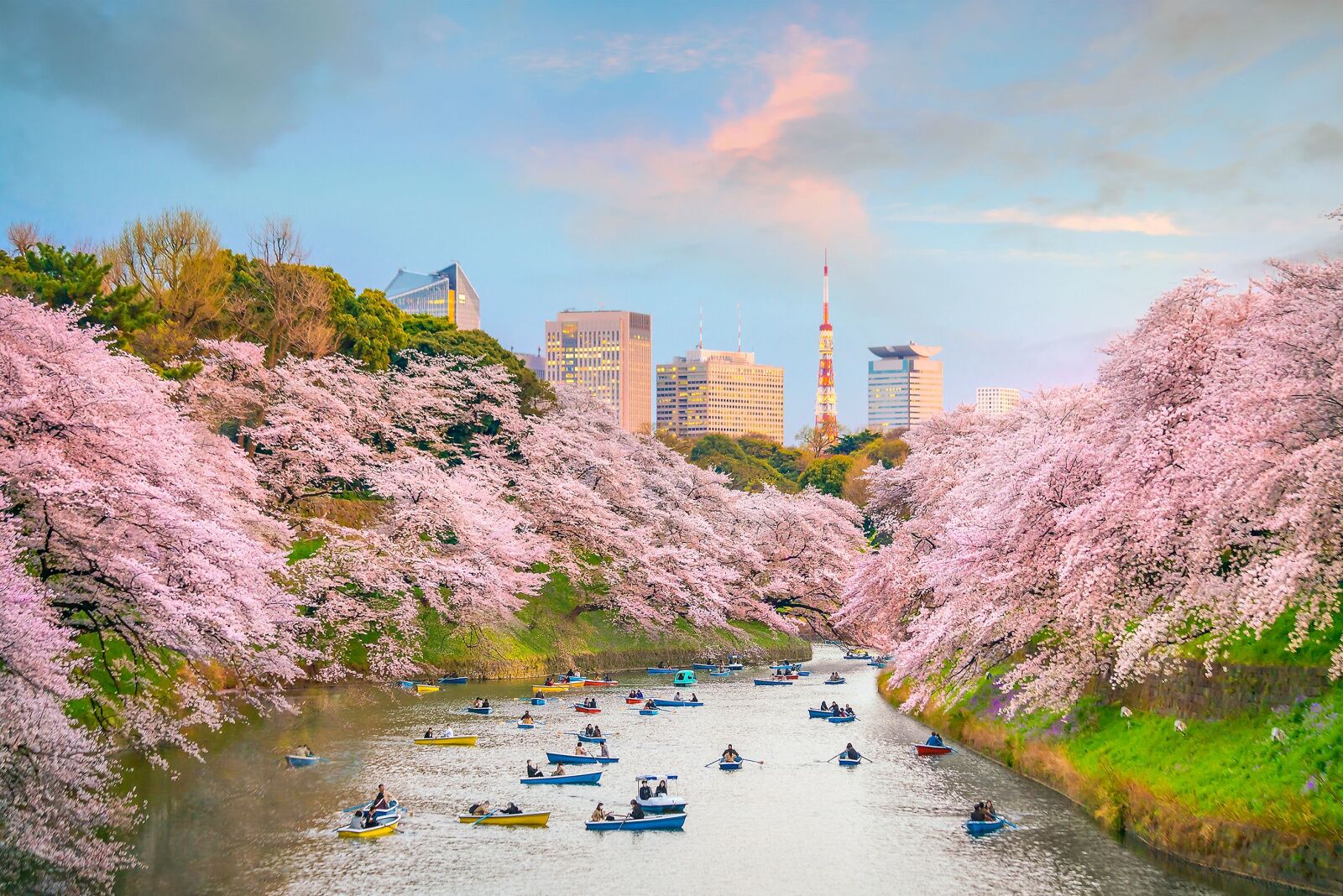
Photo: f11photo/Shutterstock
The history of the Cherry Blossom Festival dates to the 8th century, when Japanese aristocrats would gather to admire the beauty of the cherry blossoms and hold picnics underneath the trees. Over time, the tradition spread to the general public, and now the festival is celebrated by people of all ages and backgrounds. One of the most famous places to see cherry blossoms in Tokyo is Ueno Park, which has more than 1,000 cherry trees and transforms into a sea of pink blossoms in late March and early April.
The Ueno Cherry Blossom Festival is one of the biggest and most crowded in all of Japan, so it’s best to book your hotel rooms in advance. The problem is that the exact dates change from year to year, so you kind of have to guess when it’ll be happening and just hope you’re correct (or stay near Tokyo for a few weeks). Ueno Park, as well as many others in the city, will have extra food vendors, live music, events, and other outdoor offerings to celebrate the season.
You can easily get to Ueno Park from anywhere in Tokyo. It’s on the Yamanote Metro Line, four stops from Tokyo Station. Many people also rent boats at Chidorigafuchi Park during the festival, since the river is lined with cherry trees on either side.
- Usually held: Late March into mid-April
- Location: Ueno Park has the biggest celebration
May: Kanda Matsuri

Photo: Pierre Jean Durieu/Shutterstock
Every two years (on odd-numbered years), Tokyo celebrates the Kanda Matsuri, or the ‘Kanda Festival.’ The festivities take place over several days and involve colorful processions and parades that wind their way through the streets of the capital city. The event highlight are the two mikoshi (portable shrines), proceeded by vibrant teams of dancers, musicians, and chanting worshippers. Mikoshi are made from wood, bamboo, paper, and lacquer and feature intricate carvings and often topped with gold-plated decorations. Carrying mikoshi is said to bring good luck to those who take part in raising them up during the procession.
Along with traditional music and purification ceremonies, visitors can also try food like takoyaki (octopus dumplings), kushikatsu (fried skewers), and yakisoba (stir-fried noodles) from vendors lining the streets. In Tokyo, the parade takes place in the neighborhood around Kanda-jinja Shrine. There’s also a mini-ceremony held on even years, but shoot for an off year if you want to see the full celebration.
- Usually held: Around May 15
- Location: Around Kanda-jinja Shrine
June: Sanno Matsuri
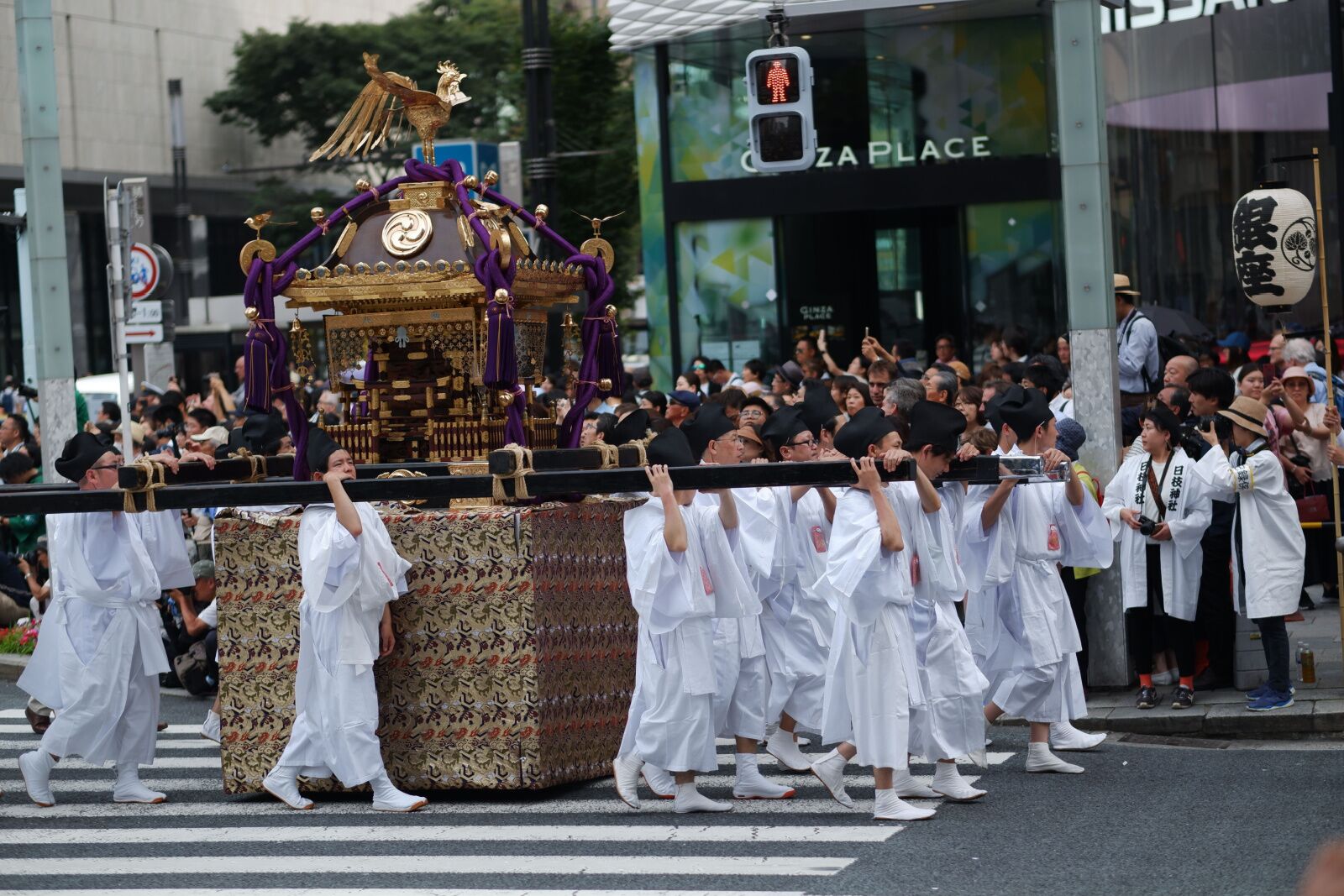
Photo: kadinugraha/Shutterstock
Sanno Matsuri is another of the biggest festivals in Tokyo and takes place in mid-June. The festival has performances, workshops, and parades over a two-week period, but the parade is the best single event. It’s known for the precession of mikoshi, horses, and other traditional Japanese elements. Participants dress in colorful traditional costumes and chant and play instruments like drums and shamisen (Japanese lutes).
The parade starts at Hie Shrine and makes a loop south of Chiyoda City, stopping at the Imperial Shrine and Nihonbashi Hie Shrine (among other sites) before returning to Hie Shrine in the evening. That’s the best time and place to witness the festival, since the evening brings performances like traditional dance and drumming. Also at Hie Shrine is a huge loop made from straw. Jumping through it is supposed to cleanse you of sins, so it’s probably worth waiting in line if you’ve got anything weighing you down.
The festival happens every other year on odd-number years.
- Usually held: Middle two weeks of June
- Location: Neighborhoods south of the Imperial Palace
July: Mitama Matsuri
Mitama Matsuri is a festival at Yasukuni Shrine focused on honoring and remembering the dead — though it’s best known for the thousands of lanterns illuminated at night. It’s somber but beautiful, and only lasts for four days, so schedule your trip for mid-July if you want to see it.
At the festival, there are usually 10,000 lanterns in the outer shrine and another 20,000 in the inner shrine. They’re lit around 6 PM, but it’s best to go after 7 or 8 PM once the sun has set and the lanterns stand out even more. There are usually activities going on during the day at the shrine, too, like musical performances and art exhibits. Yasukuni Shrine is about a five-minute walk from Tokyo’s Kudanshita metro station.
- Usually held: Second week of July
- Location: Yasukuni Shrine
August: Asakusa Samba Festival
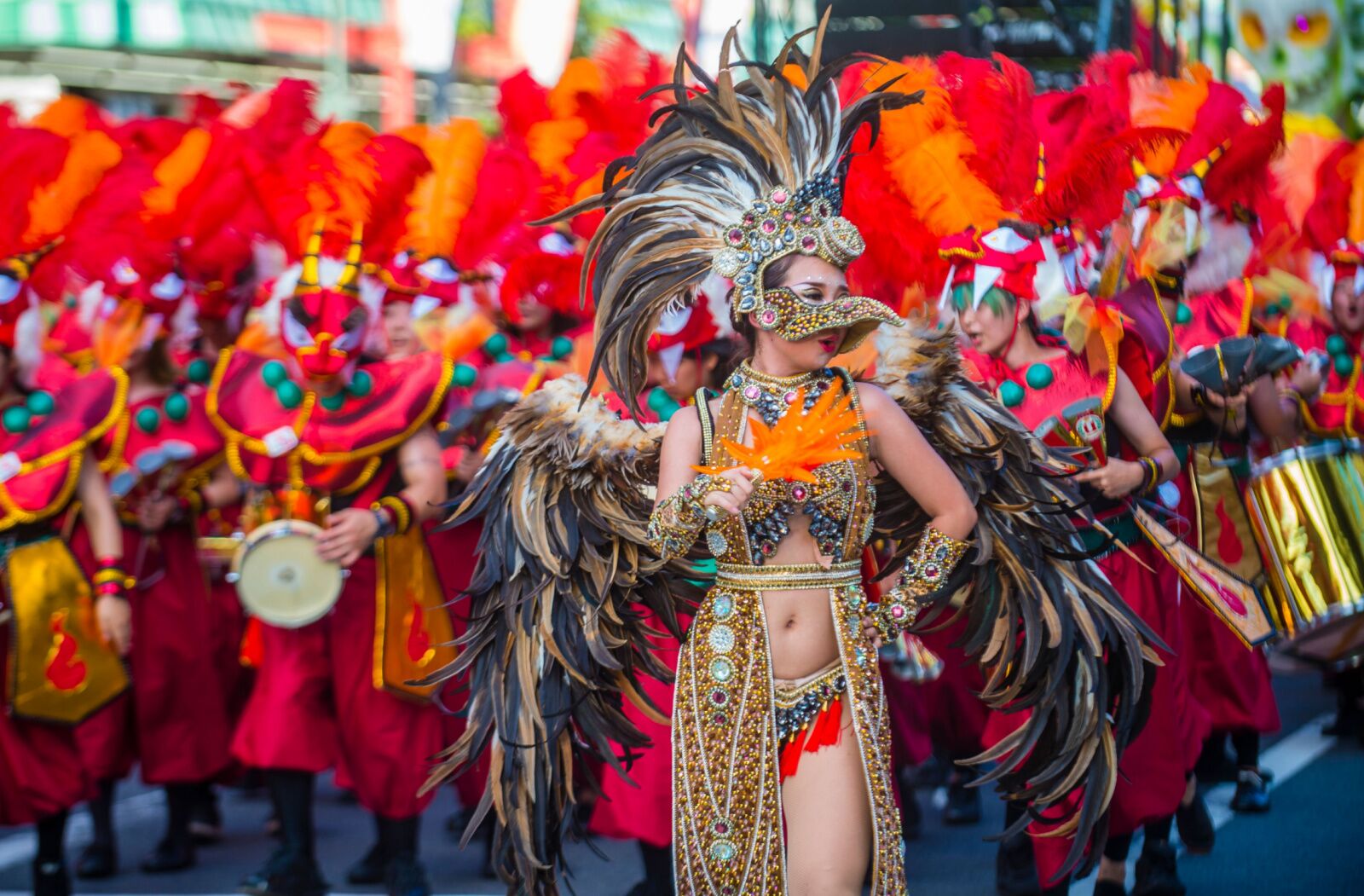
Photo: Kobby Dagan/Shutterstock
The Asakusa Samba Festival is an annual festival in the Asakusa District and is certainly one of the liveliest in the city. The festival is one of the biggest samba events outside of Brazil, with an energetic and colorful parade featuring samba dancers, floats, and musicians.
The festival started in 1981 as a small event organized by a group of Japanese samba enthusiasts who were inspired by Carnival in Rio de Janeiro and wanted to celebrate the same in Tokyo. It’s grown quite a bit since then, and now attracts around 500,000 visitors annually.
The parade begins at Umamichi-dori Avenue and winds through the streets of Asakusa, passing famous landmarks such as the Senso-ji Temple and the Kaminarimon Gate. It’s extremely energetic and fun, and visitors are encouraged to watch and participate — it’s not at all limited to just locals. In addition to the parade, there are always vendors and food and drink stalls, performances by samba bands and modern DJs, dance performances, and more.
- Usually held: Last Sunday in August
- Location: Asakusa District
September: Tokyo Game Show
Tokyo Game Show isn’t “game show” like “Jeopardy” or “Wheel of Fortune.” It’s “game show” as in a show of games — video games, specifically. It’s sort of like the US’s Comic Con conventions in size, but it’s focused on gaming only.
The four-day event is a place for industry insiders to connect and learn about the latest and greatest tech, but it’s open to the public on the weekend. There are huge displays and exhibits from video game companies, game demos and photos opportunities, virtual reality experiences, Q&A sessions with game designers, e-sports tournaments, live music, and more.
Dressing up is also a big part of Tokyo Game Show, and people go all-out, especially when it comes to Anime-inspired costumes. Tickets usually go on sale on July.
- Usually held: Third weekend of September
- Location: Makuhari Messe (Chiba City convention center)
October: Tokyo International Film Festival
The Tokyo International Film Festival (TIFF) is an annual film festival that started in the1980s and has become one of the most important film events in Asia. That’s especially true in the last few years as more and more films from countries like Korea and Japan have gone mainstream in Hollywood. It’s one of the longer festivals in Tokyo, running for 10 days in October and showing both international and Japanese films.
The International Competition section is the festival’s main event, featuring a selection of the best films from around the world competing for the Tokyo Grand Prix. Films that have been shown at the festival include “Parasite” (which won Best Picture at the 2020 US Academy Awards), “Shoplifters” (which won the 2018 Palm D’or at the Cannes Film Festival), and La La Land, the Martian, and Inception, all of which showed at TIFF before they were released in the US.
There’s a lottery to buy presale tickets, but otherwise, you can buy them during the festival based on what movies you want to see.
- Usually held: Last two weeks of October (sometimes into November)
- Location: Various locations, but always near Metro stations
November: Tokyo Jazz Festival
The Tokyo Jazz Festival is actually a series of events around the city every November. The main attractions are the shows, and many are free, though others are at smaller, more intimate venues and require tickets. Artists include both international and domestic jazz musicians, with a focus on how diverse the genre can be. Acts also include artists that fuse jazz with other musical styles, include avant-garde acts and new artists performing for the first time. Notable past performers include Herbie Hancock, Wayne Shorter, Chick Corea, Esperanza Spalding, and Cassandra Wilson.
The main stage is at the Tokyo International Forum but shows take place around the city. The festival also includes workshops, music classes, jazz film screenings, and music-inspired photography and art exhibitions. Tickets are available online and usually go on sale around mid-May.
- Usually held: Last week of November
- Location: Tokyo International Forum (near Yūrakuchō Station)
December: Tokyo Christmas Market
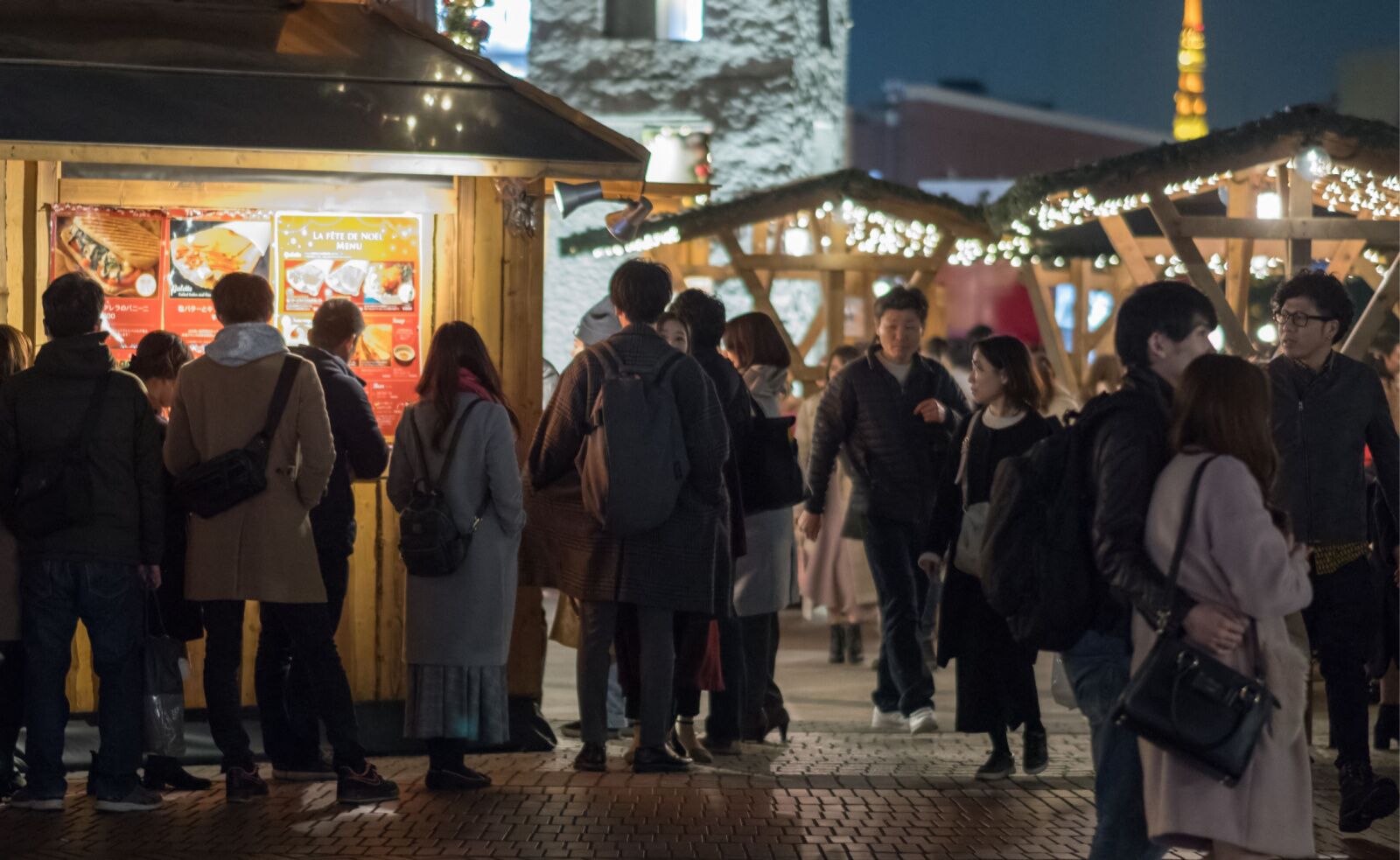
Photo: MAHATHIR MOHD YASIN/Shutterstock
Tokyo Christmas markets are annual events in different locations throughout the city. They’re basically Tokyo’s version of Bavaria’s famous Christmas markets, with a festival atmosphere, holiday decorations, lights, music, food and drink stalls, and plenty of wooden stands selling unique gifts and seasonal treats like hot wine and German-style pastries.
The most popular Tokyo Christmas Market is in Hibiya Park. It typically opens in late November and runs through late December. There’s also a popular one in Tokyo Midtown, a shopping and entertainment complex in Roppongi. “Midtown Christmas,” as it’s called, has more than 100 stalls, the “Midtown Lights” light display, and plenty of mulled wine. But you’ll also find mini-markets across Tokyo, most of which include live music, ice skating, and photo ops with Santa Claus.
- Usually held: Last week of November through Dec 24
- Location: Hibiya Park is the main one
Where to stay in Tokyo
Tokyo is a large city but it has a very efficient public transportation program, so it’s easy to get around. Metro announcements and signage are in Japanese and English, and the trains are extremely organized and efficient. So don’t worry too much about your hotel’s location. Japan’s speedy bullet train system makes it easy to get around various cities, so you don’t need to rely much on rideshares or taxis while you’re in the country.
While there are great hotels in Tokyo, there are also really cool Airbnbs in Tokyo, if home rentals are more your vibe.
We hope you love the spaces and stays we recommend! Just so you know, Matador may collect a small commission from the links on this page if you decide to book a stay. Listed prices are accurate as of the time of publication.
Hotel & Spa J Mex

Photo: Expedia
Hotel & Spa J Mex is in the city’s Shinjuku District and is very close to entertainment and nightlife, making it a great place to stay if you’re attending festivals in Tokyo and want to stay somewhere equally exciting. Depending on who you ask, it could be considered a “love hotel” — which actually makes it a pretty fun place for couples to stay for a few nights, especially if they want to experience Tokyo’s modern culture. Rooms start around $140 a night, and it’s adults-only, obviously.
Hyatt Regency Tokyo
Okay, a Hyatt isn’t the most exciting hotel to stay in, but this particular one has a lot going for it. It’s near Shinjuku attractions like the Golden Gai and Shinjuku Gyoen National Garden, and there are five on-site restaurants to grab a bite if you’re tired after spending all day in the city. Book a room on the top floor, and you may be able to see Mount Fuji on a clear day. Rooms start around $200.
The Peninsula Tokyo
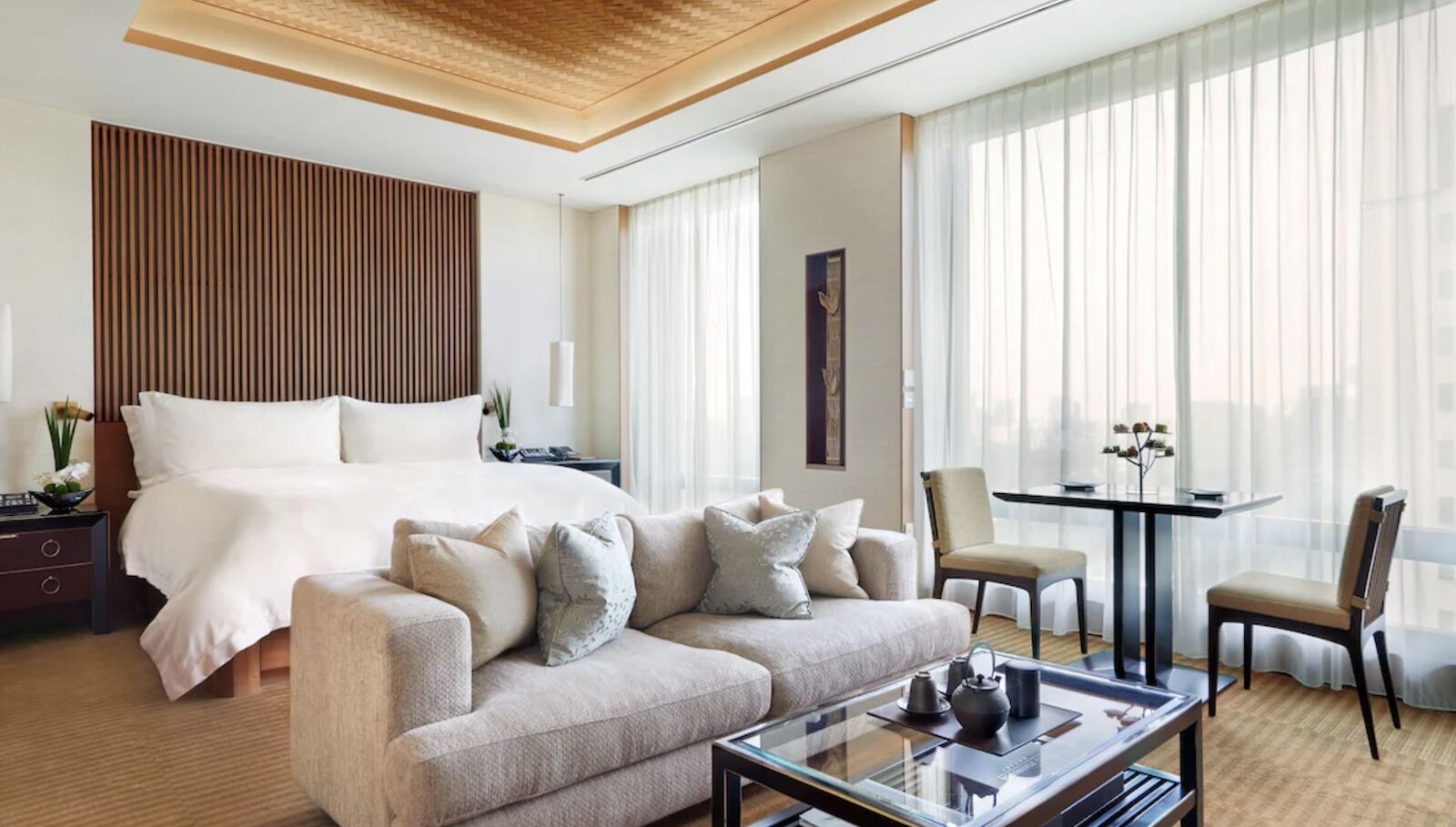
Photo: Expedia
For a five-star, luxury experience near the Imperial Palace, The Peninsula Tokyo should fit the bill. Rooms are modern and posh with hints of traditional Japanese design elements, and there’s a highly rated on-site spa. It’s also very close to Tokyo Station and has an airport shuttle, which makes it a good pick for your first or last stop in the country. Nothing about it is cheap, however: rates start around $1,600 a night.